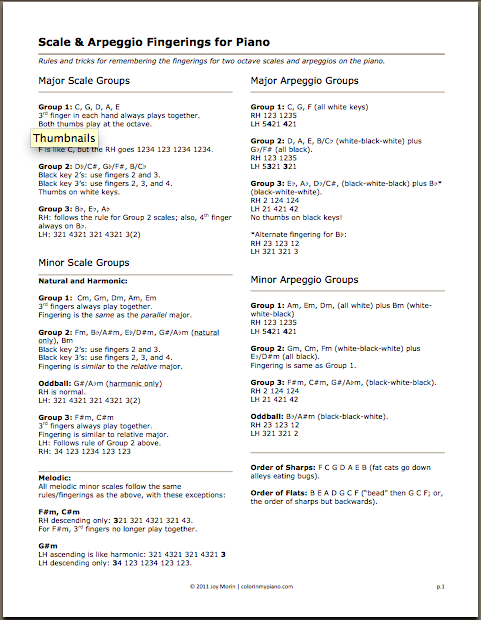 Even from the beginning, the pieces in most modern piano method books require the student to move around the keyboard quite a bit. Older piano methods (at least, the ones that utilize the Middle C reading approach) require the student to stay around the middle of the piano during the entire first level, or even further in some cases. I’m glad modern methods require the student to move around the keyboard, because this because it helps student become familiar and comfortable with the whole keyboard from day one instead of inadvertently teaching the student that anything away from the middle of the piano is “hard.”
Even from the beginning, the pieces in most modern piano method books require the student to move around the keyboard quite a bit. Older piano methods (at least, the ones that utilize the Middle C reading approach) require the student to stay around the middle of the piano during the entire first level, or even further in some cases. I’m glad modern methods require the student to move around the keyboard, because this because it helps student become familiar and comfortable with the whole keyboard from day one instead of inadvertently teaching the student that anything away from the middle of the piano is “hard.”
I’ve had parents notice and comment on this difference between older and newer methods. They are surprised when their student needs to use the whole keyboard at their first lesson, because when they took lessons as a child, they remember playing around Middle C and never venturing to the extreme ends of the keyboard.
As an example: The first four pieces in the Primer Level of the Faber Lesson Book require the student to play a simple pattern on the black key group of 2 or 3, and then to repeat the pattern twice, moving up an octave each time. Other pieces throughout the series require students to play notes up or down an octave, especially at the end of the piece. Other method books take a similar approach.
Often, to the student, making those leaps across the piano is the most challenging aspect of a piece. They sometimes need to stop to think about where their hand needs to go. Even if they know where their hand needs to go, they still might take some extra time searching the keyboard with their fingers to put the correct finger on the correct key. This, of course, disrupts the rhythm of the piece.
How can we help students solve this problem? Continue reading “Teaching Tip: Leaping Across on the Keyboard”




 Every teacher approaches technique exercises a little bit differently. I usually start teaching students 5-finger patterns (aka pentascales) during the first month or two of study. I start by assigning the C Major 5-finger pattern (5FP) and sometimes G Major along with it. Every week or every-other-week, I add a new 5FP to their list, following the Circle of 5ths.
Every teacher approaches technique exercises a little bit differently. I usually start teaching students 5-finger patterns (aka pentascales) during the first month or two of study. I start by assigning the C Major 5-finger pattern (5FP) and sometimes G Major along with it. Every week or every-other-week, I add a new 5FP to their list, following the Circle of 5ths.










 Some of you may remember the
Some of you may remember the 



 About a week ago, I received an email from a reader who states that he is learning the Bach-Petri transcription of “Sheep May Safely Graze.” (You may recall me posting a YouTube video of it
About a week ago, I received an email from a reader who states that he is learning the Bach-Petri transcription of “Sheep May Safely Graze.” (You may recall me posting a YouTube video of it 
 This month’s discussion topic:
This month’s discussion topic: